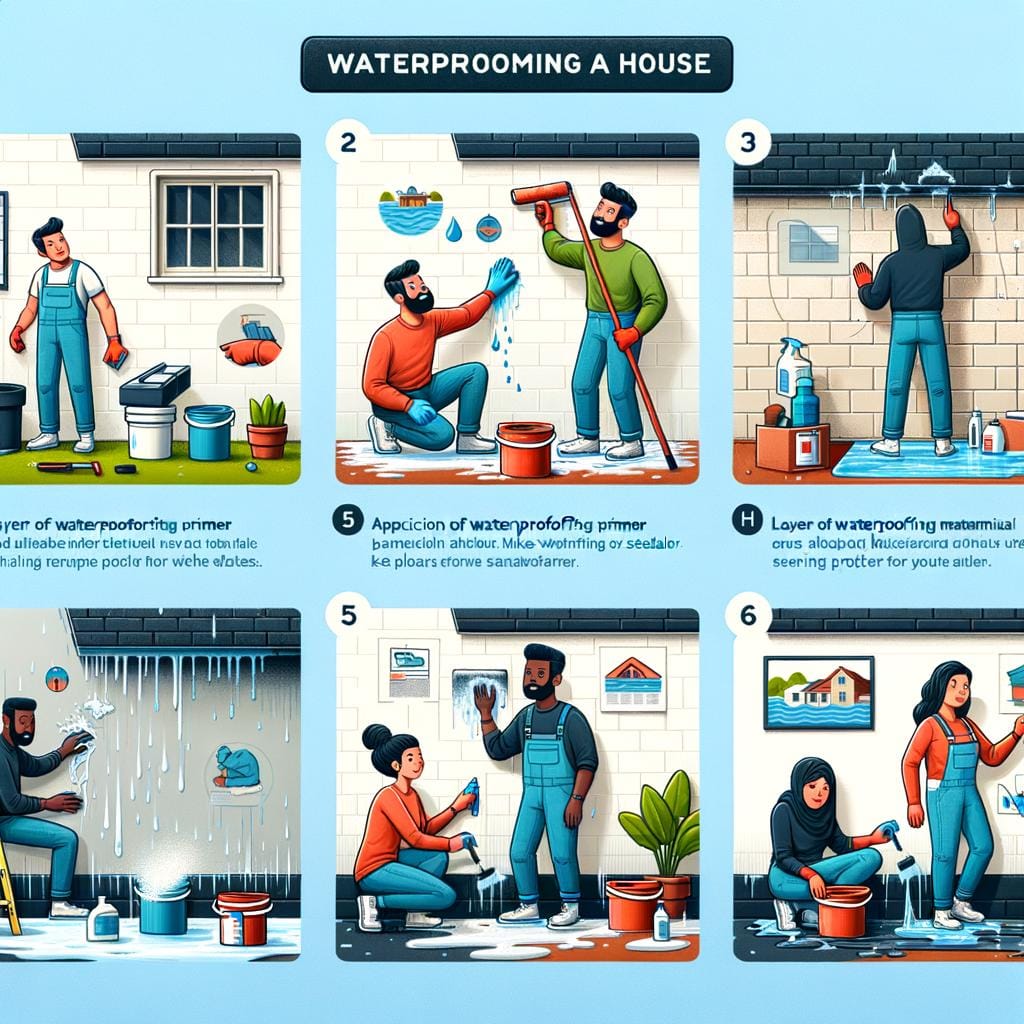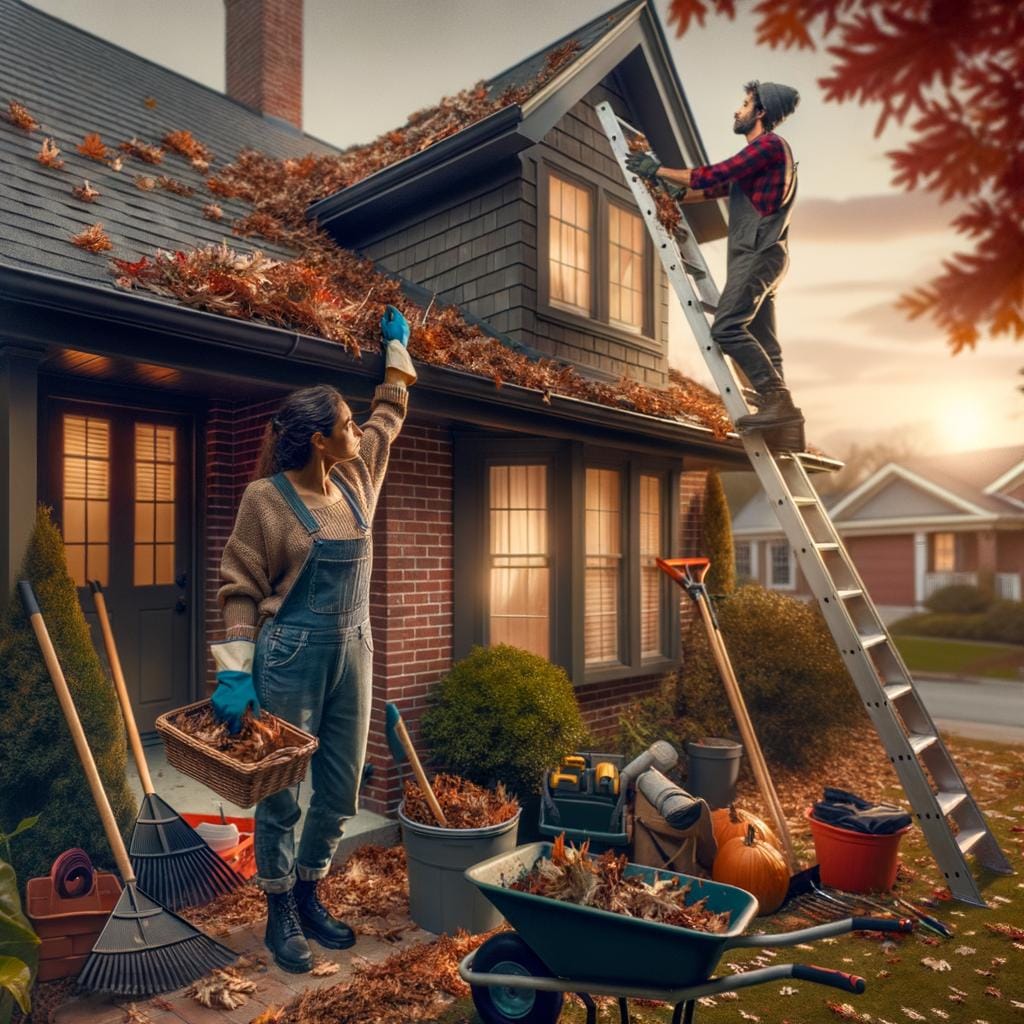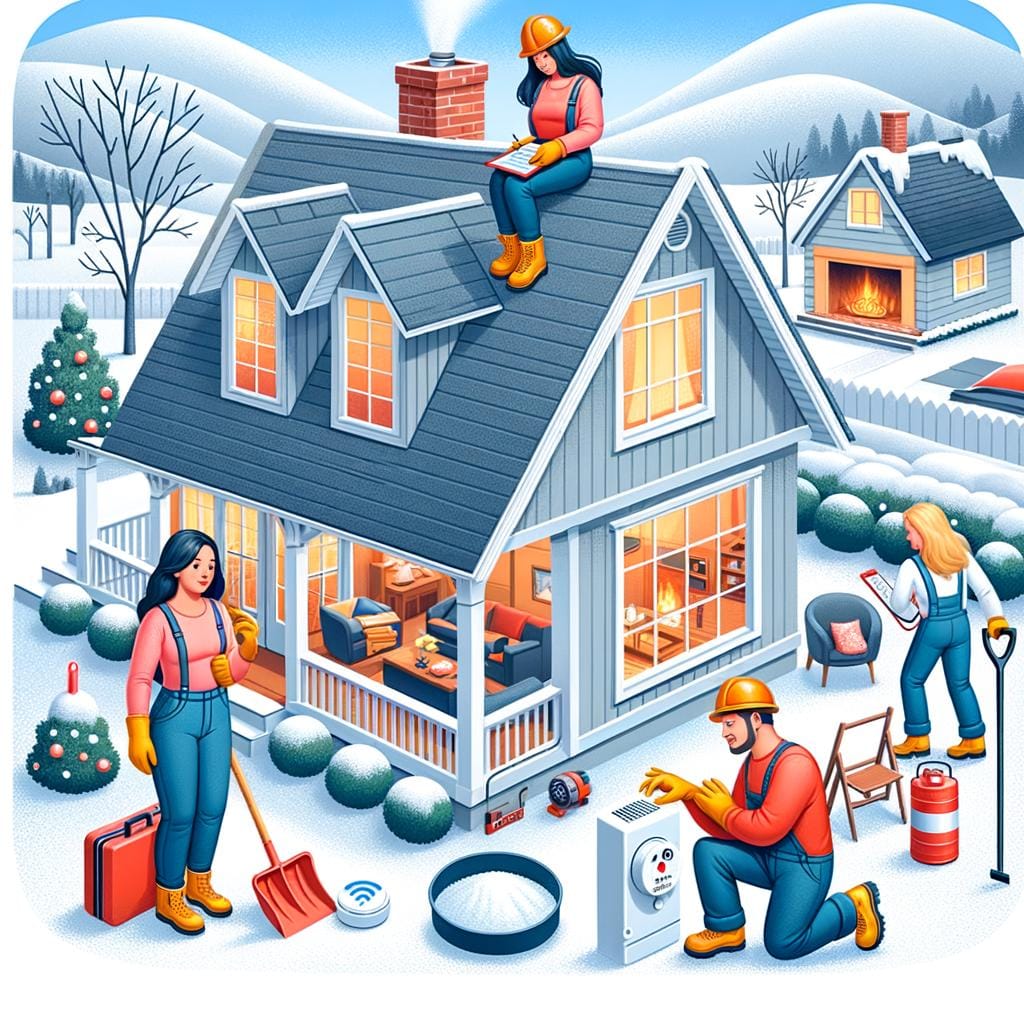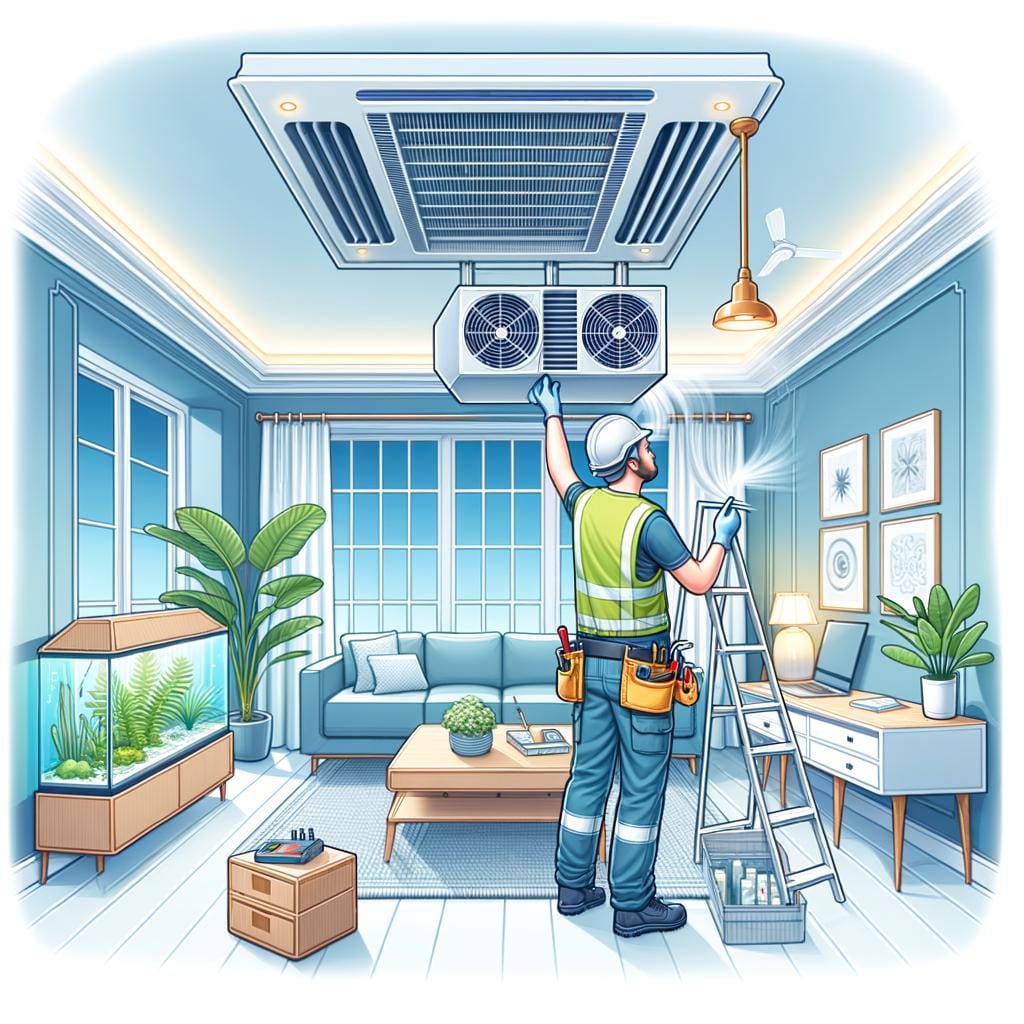Waterproofing is a crucial aspect of home maintenance that can prevent costly water damage issues. By implementing effective waterproofing tips, homeowners can protect their property from the detrimental effects of moisture infiltration. Whether it’s protecting basements, roofs, or foundations, waterproofing plays a significant role in preserving the structural integrity of a home and saving money on potential repairs.
Water damage is a common issue faced by homeowners, with various culprits such as leaking roofs, faulty gutters, and seepage through foundations contributing to the problem. Identifying the signs that indicate the need for waterproofing is essential in preventing extensive damage to your property. From mold growth to damp walls, these indicators prompt homeowners to take action and apply appropriate waterproofing solutions.
In this article, we will explore different aspects of waterproofing techniques for both interior and exterior areas of a home. From basement waterproofing to roof and gutter protection, we will provide valuable insights into DIY projects and hiring professional contractors for efficient waterproofing solutions. Investing in proper waterproofing measures not only safeguards your home but also ensures long-term protection against water-related issues.
Common Causes of Water Damage in Homes
Water damage in homes can be caused by a variety of factors, all of which can lead to costly repairs if not addressed promptly. One common cause of water damage is poor or inadequate waterproofing. Without proper waterproofing measures in place, water can seep through cracks, gaps, and porous surfaces, causing damage to walls, floors, and structural elements of the home. This can result in mold growth, rotting wood, and even foundation issues.
Another common cause of water damage in homes is leaky pipes and plumbing fixtures. Even a small leak can lead to significant water damage over time if left unchecked. It is important to regularly inspect your plumbing system for any signs of leaks and address them promptly to prevent water damage. Additionally, clogged gutters and downspouts can also contribute to water damage by allowing water to overflow and seep into the foundation of the home.
To prevent water damage in your home, it is essential to implement effective waterproofing strategies. Some key waterproofing tips include maintaining your roof and gutters regularly to ensure proper drainage, sealing any cracks or gaps in the foundation walls, installing a sump pump in the basement as a backup measure against flooding, and ensuring that landscaping slopes away from the foundation to prevent water from pooling near the house.
By taking proactive steps to waterproof your home, you can avoid costly repairs and protect your property from water damage in the long run.
| Common Causes of Water Damage | Impact |
|---|---|
| Poor or inadequate waterproofing | Mold growth, rotting wood, foundation issues |
| Leaky pipes and plumbing fixtures | Significant damage over time if left unchecked |
| Clogged gutters and downspouts | Allow water overflow leading to foundation issues |
Signs That You Need Waterproofing in Your Home
Waterproofing is a crucial aspect of home maintenance that often gets overlooked until water damage becomes a significant issue. Recognizing the signs that you need waterproofing in your home can save you time, money, and stress in the long run. Here are some common indicators that your home may be in need of waterproofing solutions:
- Water Stains: Notice water stains on your walls or ceilings? This could be a sign of water seepage through cracks or leaks in your foundation.
- Musty Odors: If you detect a musty or damp smell in certain areas of your home, it could indicate mold growth due to excess moisture.
- Peeling Paint or Wallpaper: Water damage can cause paint or wallpaper to peel, bubble, or crack. This is often a visual indicator of underlying water issues.
If you notice any of these signs, it is essential to address the problem promptly before it escalates into more severe damage. By investing in proper waterproofing solutions, you can protect your home from costly repairs and ensure the longevity of your property.
Some Additional Tips for Identifying if You Need Waterproofing in Your Home
- Inspect your basement for any signs of water infiltration, such as puddles, dampness, or efflorescence (white mineral deposits).
- Check for any cracks or gaps in your foundation that may allow water to enter your home.
- Monitor the condition of your roof and gutters regularly to prevent water from seeping into walls and causing damage.
Taking proactive steps to address waterproofing issues can safeguard your home against potential water damage and ensure a safe and healthy living environment for you and your family. Remember, prevention is always better than cure when it comes to protecting your most significant investment – your home.
Exterior Waterproofing Techniques for Basements and Foundations
When it comes to protecting your home from water damage, exterior waterproofing techniques for basements and foundations are essential. By taking proactive measures to prevent water from seeping into your home’s structure, you can save yourself from costly repairs and potential health hazards in the future. Here are some waterproofing tips to help you safeguard your property:
One crucial tip for exterior waterproofing is proper drainage. Make sure that your gutters and downspouts are clear of debris and direct water away from your foundation. Installing a sump pump or French drain system can also help prevent water buildup around your basement or foundation, reducing the risk of leaks and seepage.
Another important aspect of exterior waterproofing is inspecting and repairing any cracks or gaps in your foundation walls. These openings can allow water to enter your home, causing mold growth, structural damage, and other issues. By sealing these vulnerabilities with waterproof sealants or membranes, you can create a barrier against moisture infiltration.
Additionally, consider grading the soil around your home’s foundation to slope away from the building. This simple yet effective technique helps prevent water from pooling near the walls and potentially causing water damage. By incorporating these exterior waterproofing tips into your maintenance routine, you can protect your home from the damaging effects of water infiltration for years to come.
Interior Waterproofing Solutions for Leaky Basements and Crawlspaces
Leaky basements and crawlspaces can be a nightmare for homeowners, leading to water damage, mold growth, and structural issues if left unaddressed. Fortunately, there are several effective interior waterproofing solutions that can help keep these areas dry and protect your home.
One of the most common interior waterproofing techniques for leaky basements is the installation of a perimeter drainage system. This typically involves creating a trench along the interior perimeter of the basement floor, installing drain tiles or pipes, and directing water towards a sump pump for removal. The collected water is then pumped away from the foundation to prevent it from seeping into the basement.
Another popular method for waterproofing leaky basements and crawlspaces is the application of a waterproof sealant or membrane on walls and floors. This barrier helps prevent moisture from penetrating through porous surfaces, keeping the space dry and free from water damage. Additionally, repairing any cracks or holes in the walls with hydraulic cement can further enhance the effectiveness of interior waterproofing.
To further enhance interior waterproofing in basements and crawlspaces, proper ventilation is essential. Installing a dehumidifier can help regulate humidity levels and prevent condensation buildup, reducing the risk of mold growth and musty odors. It is also important to regularly inspect plumbing fixtures, such as pipes and faucets, for any leaks that could contribute to excess moisture in these areas.
| Interior Waterproofing Solutions | Benefits |
|---|---|
| Perimeter Drainage System | Effective in directing water away from the foundation |
| Waterproof Sealant Application | Creates a protective barrier against moisture intrusion |
| Dehumidifier Installation | Regulates humidity levels to prevent mold growth |
Waterproofing Tips for Roofs and Gutters
When it comes to protecting your home from water damage, ensuring that your roofs and gutters are properly waterproofed is crucial. The roof is the first line of defense against rain, snow, and other elements, while gutters play a significant role in directing water away from your home’s foundation. Here are some essential waterproofing tips for roofs and gutters to help you maintain a dry and safe home.
Regular Roof Inspections
One of the most important steps in roof maintenance is conducting regular inspections. Look for signs of wear and tear, damaged shingles, or areas where water could potentially penetrate. Address any issues promptly to prevent water leaks and damage to the underlying structure. Additionally, make sure that roof flashings are properly sealed to prevent water infiltration.
Clean Gutters Regularly
Clogged gutters can cause water to overflow and seep into your home’s foundation, leading to basement flooding and structural issues. To prevent this, it is essential to clean your gutters regularly, especially during the fall when leaves tend to accumulate. Consider installing gutter guards to minimize debris build-up and ensure proper drainage.
Invest in Quality Materials
When it comes to waterproofing your roof, using high-quality materials can make a significant difference in its longevity and effectiveness. Invest in durable shingles, underlayment, flashing, and sealants designed specifically for waterproofing purposes. Choosing the right materials will help enhance the overall protection of your home against water infiltration.
By following these waterproofing tips for roofs and gutters, you can effectively safeguard your home against potential water damage. Regular maintenance, timely repairs, and investing in quality materials are key components of an effective waterproofing strategy for protecting your home from leaks and costly repairs in the long run. Remember that prevention is always better than cure when it comes to maintaining a dry and secure living environment for you and your family.
DIY Waterproofing Projects You Can Tackle Yourself
Waterproofing your home is crucial to prevent water damage and maintain the structural integrity of your property. While some waterproofing tasks may require professional help, there are several DIY projects that you can undertake to protect your home from moisture infiltration. Here are some DIY waterproofing tips that you can tackle yourself:
- Inspect and Seal Cracks: Check for any cracks in your basement walls or foundation and seal them with a waterproof sealant to prevent water from seeping in.
- Install Exterior Drainage Systems: Make sure your gutters and downspouts are clear of debris to direct water away from your home’s foundation. Consider adding extensions to downspouts to ensure water is discharged at least 5 feet away from the house.
- Apply Waterproof Coating: Consider applying a waterproof coating to exterior walls, basement floors, or concrete surfaces to create a protective barrier against moisture penetration.
In addition to these DIY waterproofing projects, maintaining proper ventilation in damp areas of your home and addressing any plumbing leaks promptly can also help mitigate water damage risks. By taking proactive measures and implementing these waterproofing tips, you can protect your home from potential water intrusion issues and save on costly repairs in the long run. Remember, prevention is key when it comes to waterproofing your home.
Hiring a Professional Waterproofing Contractor
When it comes to waterproofing your home, sometimes DIY projects may not be enough to address serious issues. In such cases, hiring a professional waterproofing contractor can ensure that the job is done correctly and effectively. However, selecting the right contractor is crucial for the success of the project. Here are some tips on what to look for and important questions to ask when hiring a professional waterproofing contractor.
What to Look for in a Professional Waterproofing Contractor
One of the first things to consider when choosing a professional waterproofing contractor is their experience and expertise in the field. Look for contractors who specialize in waterproofing specifically, as they will have a better understanding of the techniques and materials needed for effective protection against water damage. Additionally, check if the contractor has proper licensing and insurance to provide you with peace of mind throughout the project.
Important Questions to Ask Before Hiring
Before making a decision on which waterproofing contractor to hire, it’s essential to ask specific questions to ensure that they are the right fit for the job. Inquire about their previous projects related to waterproofing, including references or testimonials from satisfied customers. Ask about their process and timeline for completing the work, as well as warranties or guarantees offered on their services.
It’s also important to discuss pricing details upfront and any potential additional costs that may arise during the project. By asking these questions, you can make an informed decision when selecting a professional waterproofing contractor for your home.
Conclusion
Investing in waterproofing for your home is crucial for long-term protection against water damage. By taking preventive measures and implementing waterproofing tips, you are not only saving money in the long run but also preserving the structural integrity of your property. Water damage can lead to costly repairs, health hazards from mold and mildew, and decreased property value. Therefore, it is essential to prioritize waterproofing as part of your home maintenance routine.
One of the key benefits of waterproofing is that it helps prevent water infiltration, which can cause extensive damage to your home’s foundation, basement, roof, and other vulnerable areas. By addressing common causes of water damage, such as poor drainage, cracks in the foundation, and leaky roofs or gutters, you can mitigate the risk of costly repairs down the line.
Implementing exterior and interior waterproofing techniques tailored to your specific needs can provide added peace of mind knowing that your home is protected from potential water-related issues.
Whether you choose to take on DIY waterproofing projects or hire a professional waterproofing contractor, it is important to prioritize maintaining a dry and safe living environment for you and your family. Stay informed about the warning signs that indicate a need for waterproofing and be proactive in addressing any issues promptly. By investing in proper waterproofing measures now, you are safeguarding your home against water damage and ensuring its longevity for years to come.
Frequently Asked Questions
What Is the Best Method of Waterproofing?
The best method of waterproofing typically depends on the specific area or surface that needs to be protected from water damage. In general, some effective methods include using waterproof sealants, membranes, or coatings to create a barrier against water infiltration.
What Are the 4 Steps to Waterproofing?
The four steps to waterproofing involve preparing the surface by cleaning and repairing any damage, applying a waterproofing material such as a sealant or membrane, ensuring proper curing time for the material to bond effectively, and conducting periodic maintenance to ensure long-lasting protection against water penetration.
What Is the Best Thing for Waterproofing?
When it comes to choosing the best product for waterproofing, factors such as the type of surface, exposure to environmental elements, and desired longevity all play a role in determining the most suitable option. Common choices for waterproofing include silicone-based sealants, acrylic coatings, cementitious materials like waterproof mortar or concrete additives, or specialized membranes designed for particular applications.
Ultimately, selecting the best thing for waterproofing involves considering these factors in order to achieve optimal protection against water damage.

Hello, I’m April Denton, your go-to expert for all things home decluttering and organization. With over a decade of experience helping individuals transform their living spaces into serene, clutter-free sanctuaries, I am passionate about the life-changing benefits of decluttering. My journey into the world of organization began out of necessity, juggling a busy career and a bustling household. I quickly realized that a well-organized home was the key to a more balanced, stress-free life.





